The bathroom is the wettest room in the apartment. Even special curtains and absorbent mats cannot fully protect the surface from water ingress, so the walls and floor in the bathroom need special protection. By taking care of the waterproofing for the bathroom, you will prevent moisture from penetrating under the finish to the concrete floor slabs and prevent them from premature destruction, leading to the need for major repairs. In addition, high-quality waterproofing of the bathroom will save you from serious financial losses in the event of a pipe break or leak, from which the neighbors below could suffer. It is not so difficult to make waterproofing - you can easily do all the work with your own hands.
Waterproofing methods
To protect the floor from water in the bathroom, you can use special waterproofing materials. They can be divided into two large groups:
- coating;
- lining.
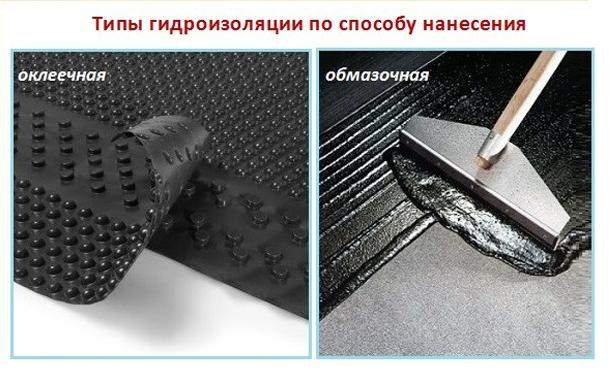
Coating waterproofing
It is a plastic material that forms a waterproof coating after application. Lubricants include:
- mastics based on bitumen or polymers with various fillers;
- polyurethane and cement-polymer mixtures;
- liquid acrylic water-based waterproofing.
Advantages of coating type bathroom waterproofing:
- versatility;
- ease and speed of application;
- the ability to protect almost any surface, for example, uneven or vertical.
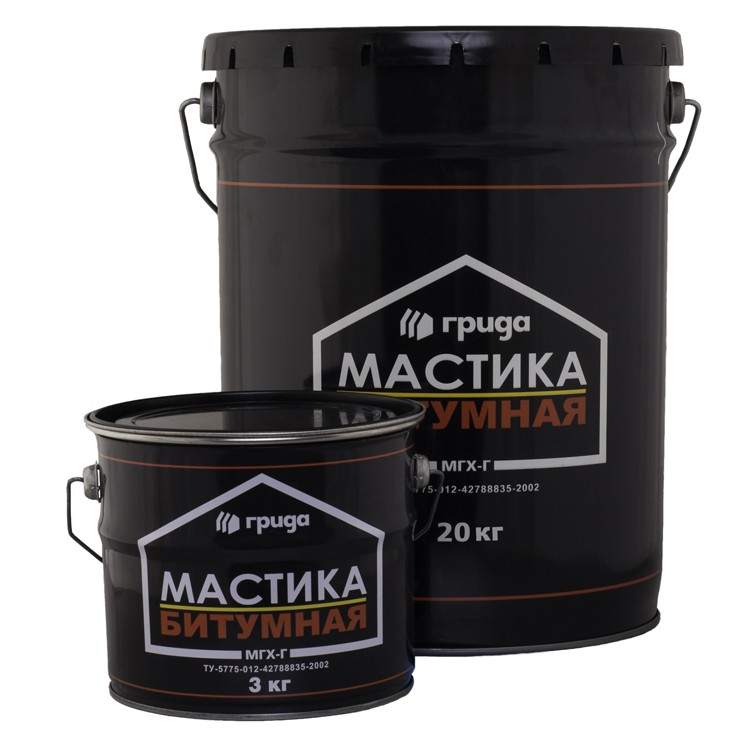
Disadvantages of bitumen-based mastics:
- instability to temperature extremes, leading to cracking;
- unpleasant smell.
Polymer and polyurethane mixtures have practically no drawbacks, moreover, they have a very aesthetic appearance and are even more convenient to apply compared to bitumen compositions.

It is produced in rolls or sheets and, in fact, is the same filled bitumen applied to fiberglass or polyester. This type of waterproofing includes:
- roofing material;
- isoplast;
- ecoflex;
- isoelast and other similar materials.
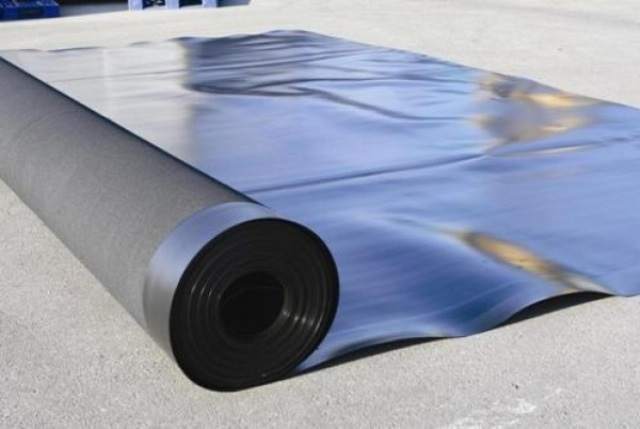
Advantages of gluing waterproofing materials:
- reliability and durability;
- they can be walked on immediately after installation.
- great care is required in the work;
- labor intensity of the process;
- exactingness to the surface - differences should not exceed 2 mm.
Preparation of the base
Do-it-yourself waterproofing of the bathroom floor begins with preparatory work. What should be done at this stage?
- The surface of the floor must be cleaned down to the concrete base.
- Regardless of which method of applying waterproofing for the bathroom is chosen, the material should be laid on a flat surface. Small depressions can be filled with cement mortar, but in some cases it will be necessary to make a leveling screed.
- The leveled floor is thoroughly swept and washed.
- The surface must be primed without fail. The primer will not only provide good adhesion of the insulating materials to the substrate, but will also strengthen the waterproofing of the coating.
Important! When choosing a primer, pay attention to its compatibility with the type of waterproofing.
After the primer has completely dried, you can start applying or laying waterproofing materials.
The device of the lubricating hydro-barrier
How to make your own hand-made waterproofing of the bathroom floor turn out to be of high quality and durable? The algorithm of actions will be as follows:
- The lower corners of the room, where the walls meet the floor, are coated with a layer of bitumen mastic.
- Then a waterproof rubber-based tape is glued to the joints around the entire perimeter.
- The entire floor surface is covered with a continuous layer of mastic. In this case, it is necessary to grip the part of the wall adjacent to the floor to a height of 30–50 cm. It is convenient to use a wide brush or roller to apply the material.
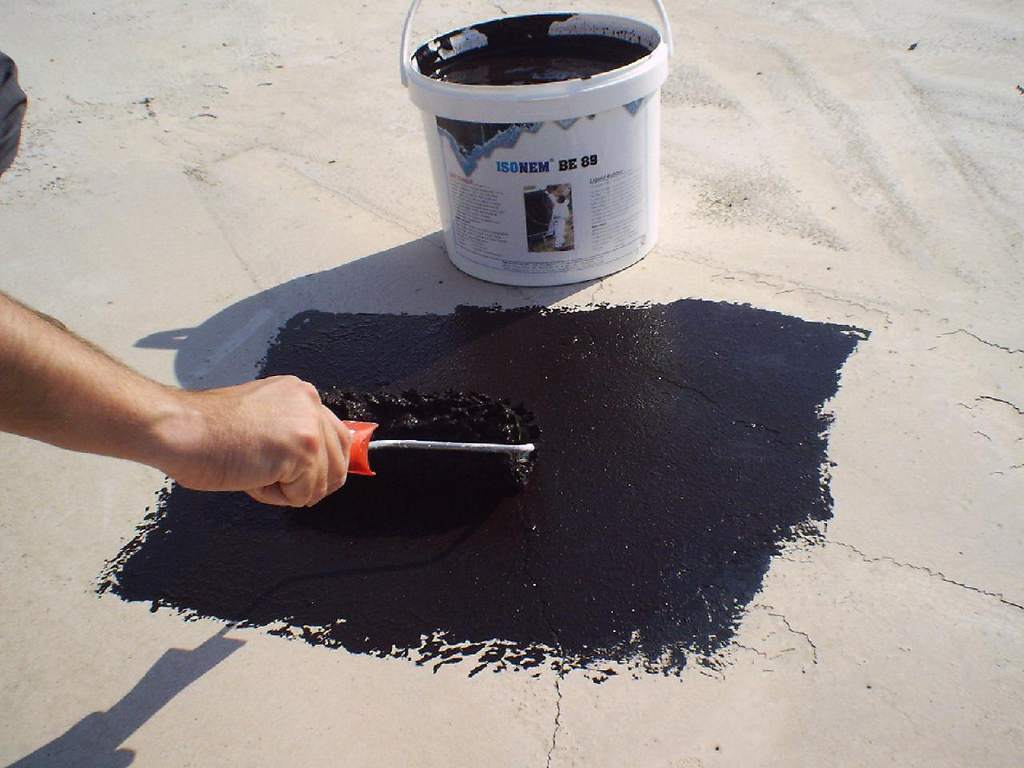
Important! The waterproofing coating is applied in 2-3 layers. After applying each layer, you should take breaks to dry it, each of which should last at least a day.
After the mastic has dried, the surface is primed again, and then the screed is made.
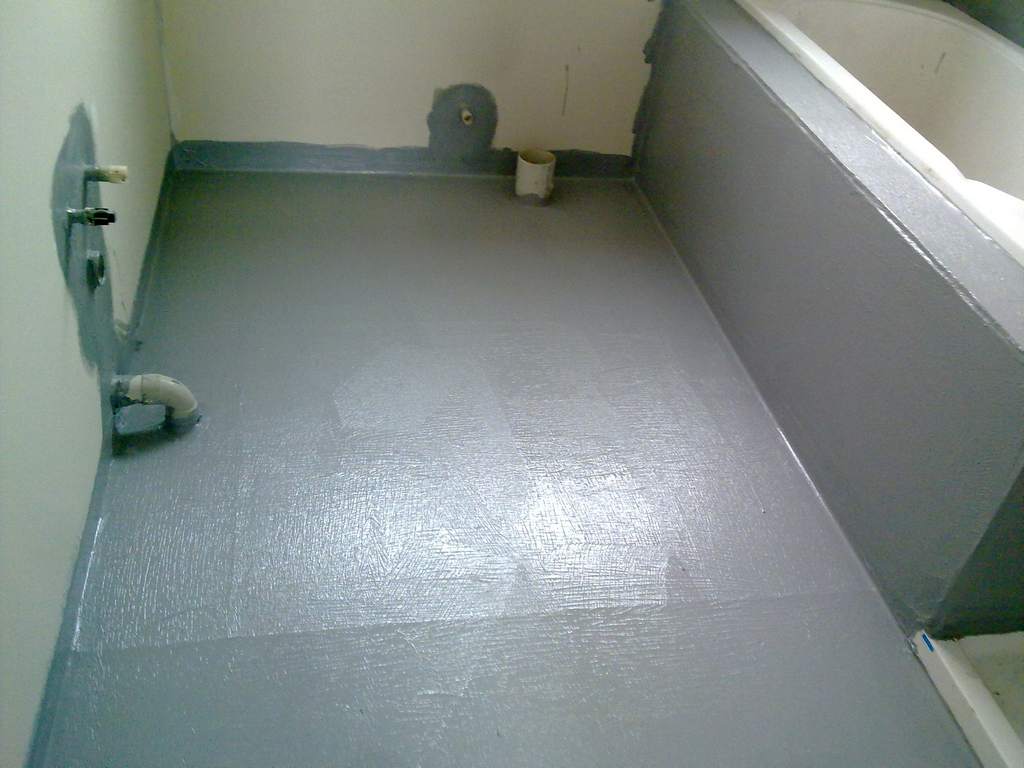
Laying tiles on a cement-adhesive mixture without screed is possible only when using acrylic or cement-based coating materials.
Waterproofing by pasting
Waterproofing in the bathroom by gluing will cost more than using only bitumen mastic. And making it with your own hands will be more difficult. Nevertheless, this method has many fans among the builders.
Roll-up waterproofing materials can be divided into two types:
- Weldable. To lay them, you will need a gas burner, the use of which in an apartment is undesirable.
- Self-adhesive. They fit quite simply, but everything must be done carefully, it will no longer be possible to re-glue in the event of an incorrect location.
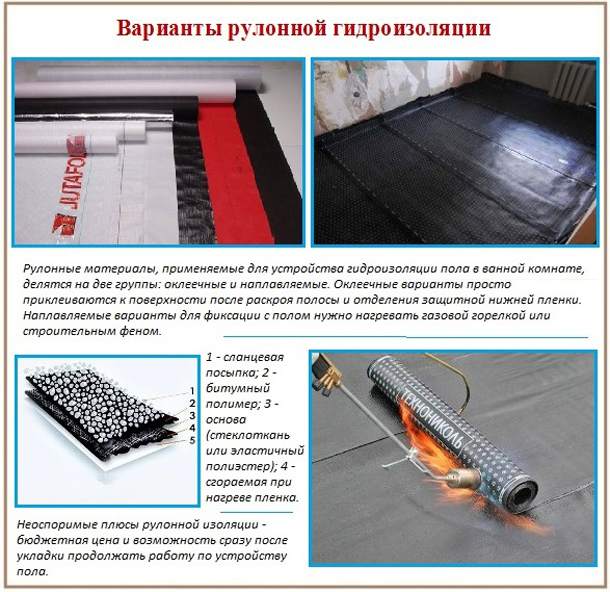
Tip: Before installing roll waterproofing for the bathroom, it is recommended to glue all joints with waterproof tape or coat with mastic. For extra security, you can apply a thin layer of mastic to the entire floor surface, overlooking the walls.
Work progress:
- The material is laid with an overlap. Each subsequent sheet should overlap the previous one by one fifth of the width. In this case, it is necessary to overlap the walls by about 15–20 cm. After cutting the sheet of the required dimensions, the protective film is removed from it. The material is laid on the floor and rolled with a heavy roller. The procedure is repeated for each subsequent sheet.

- The roll materials to be welded are preheated using a torch, rolling out gradually.
- When laying roll waterproofing, the greatest difficulty is caused by places where pipes and various communications have to be bypassed. The holes for them should be made a little less than the required size in order to get a kind of bumpers. Special rubber seals are also used. All places of such joints are additionally coated with mastic and reinforced with a waterproof tape.
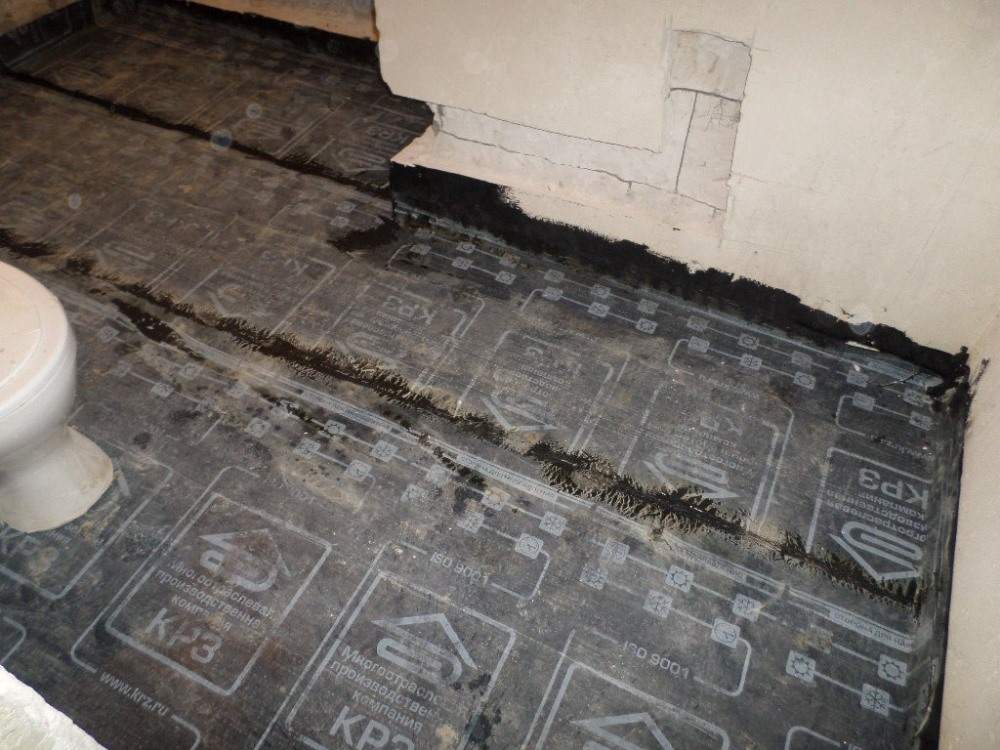
After finishing the installation, you can immediately start pouring the final screed under the tiles.
Tip: after laying the tiles, all seams can be treated with a sealant for additional protection before grouting - this will allow you to create a multi-layer waterproofing for the bathroom floor with your own hands.
Where else in the bathroom is waterproofing needed?
For high-quality waterproofing of the bathroom, you need to pay attention to the walls, which also often get water. Gradually, moisture will begin to penetrate into the partitions, leading to undesirable consequences. The most problematic areas in need of quality protection are:
- the space around the sink;
- walls adjacent to a bath or shower;
- area near the toilet in a combined bathroom.
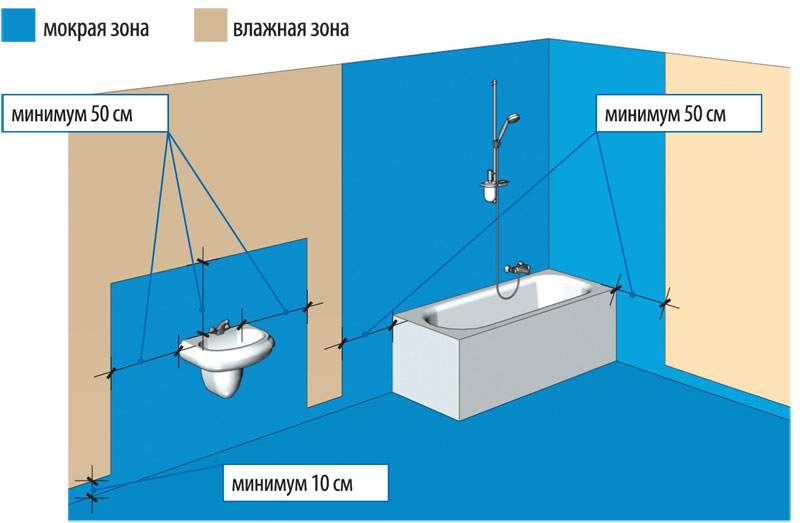
The application of waterproofing materials is similar to the treatment of a bathroom floor. It is not recommended to use bitumen-based materials for walls. It is fluid and plastic, therefore it is poorly suited for vertical surfaces and is not able to provide high-quality adhesion of the tile to the wall. It is better to use cement-polymer mixtures.
Tip: in order for the ceramic tiles to better adhere to the wall, you can partially drown a reinforcing mesh in a layer of waterproofing material, which will help ensure good adhesion.
Bathroom waterproofing can be done with high quality by hand. It does not require special skills and special tools, but it will help protect structures from the destructive effects of moisture and will avoid serious financial costs in the future.
(votes: 1
, average rating: 5,00
out of 5)



